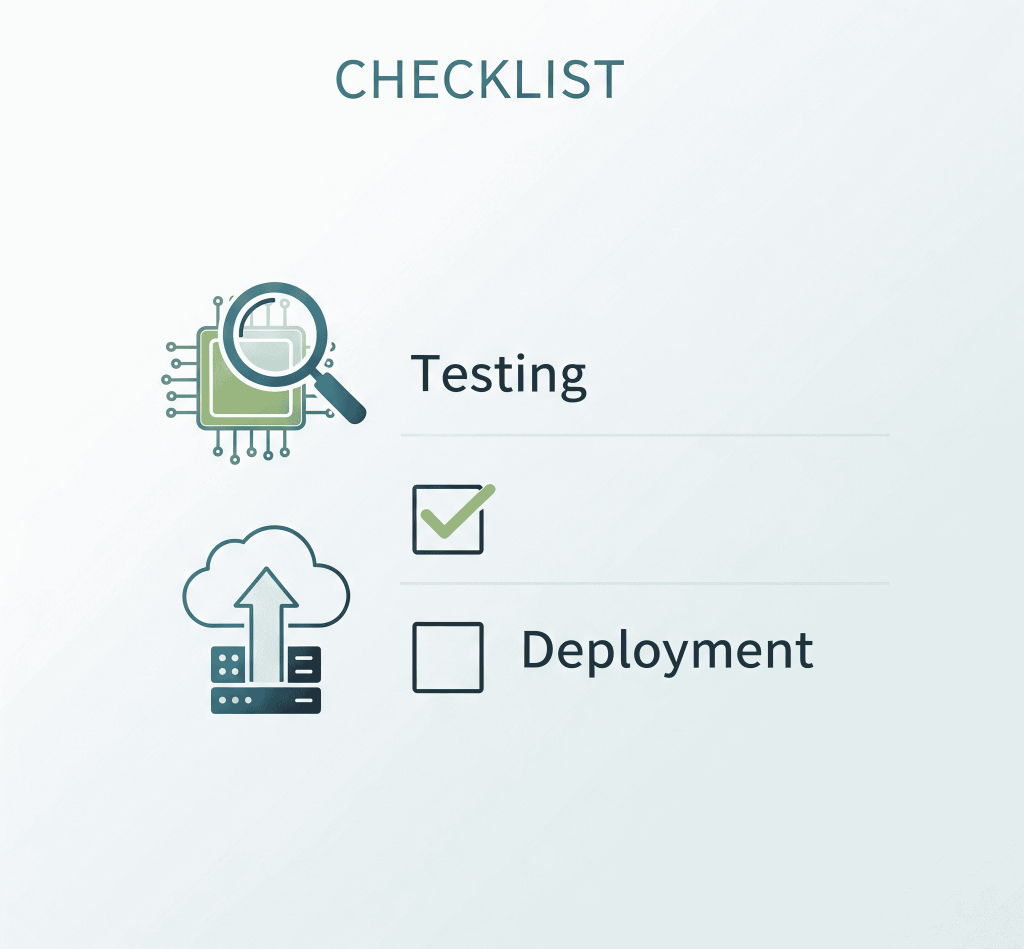Introduction
Building a web application is only half the battle — testing and deployment are what make it reliable, secure, and ready for users. A small mistake in deployment can lead to downtime, broken features, or even security risks.
That’s why every developer or business should follow a clear testing and deployment checklist to ensure smooth delivery.
In this article, we’ll walk you through a step-by-step checklist to prepare your web app for production.
🧪 Phase 1: Pre-Deployment Testing Checklist
Before deploying, thoroughly test your application across multiple dimensions.
1. Functional Testing
- Verify all features and user flows (signup, login, checkout, etc.).
- Test both happy paths and edge cases.
2. Cross-Browser & Device Testing
- Test on Chrome, Firefox, Safari, Edge.
- Verify responsive design on desktop, tablet, and mobile.
3. Performance Testing
- Run load tests to simulate multiple users.
- Optimize queries, API calls, and image sizes.
- Use tools like Google Lighthouse, GTMetrix, JMeter.
4. Security Testing
- Check for SQL Injection, XSS, CSRF vulnerabilities.
- Use HTTPS and enforce SSL certificates.
- Validate input on both frontend & backend.
5. Usability Testing
- Ensure forms, buttons, and navigation are intuitive.
- Conduct user acceptance testing (UAT).
6. Automated Testing (Optional but Recommended)
- Unit tests for core logic.
- Integration tests for API endpoints.
- End-to-end tests with tools like Cypress or Playwright.
🚀 Phase 2: Deployment Checklist
Once testing is complete, follow this checklist to deploy safely.
1. Backup Everything
- Backup database + files before making changes.
2. Set Up Environment Variables
- Store API keys, database credentials, and secrets in
.env. - Never hardcode credentials in code.
3. Optimize Database & Code
- Run migrations before deployment.
- Index database tables for faster queries.
- Minify CSS/JS bundles.
4. Server & Hosting Setup
- Configure production server (Nginx/Apache/Node server).
- Enable firewalls & SSL certificates.
- Use Docker/Kubernetes for containerized deployments (optional).
5. Deploy Using CI/CD
- Automate deployment with GitHub Actions, GitLab CI, Jenkins.
- Roll out gradually with staging → production.
6. Monitor & Logging
- Set up monitoring tools like New Relic, Sentry, LogRocket.
- Enable server logs for error tracking.
7. Rollback Plan
- Always keep a rollback strategy in case of failed deployment.
📊 Post-Deployment Checklist
After going live, don’t forget to:
- Test critical user flows again.
- Monitor server uptime with tools like UptimeRobot.
- Track performance in Google Analytics / GA4.
- Fix bugs quickly based on user feedback.
📝 Example Deployment Workflow
- Push code to GitHub main branch.
- CI/CD pipeline runs tests + build.
- Deployment to staging server.
- QA team verifies features.
- Deploy to production.
- Monitor logs and metrics.
✅ Conclusion
A structured testing and deployment checklist ensures your web applications are secure, reliable, and high-performing.
Whether you’re deploying a small website or a large SaaS product, following this process reduces downtime and improves user trust.
